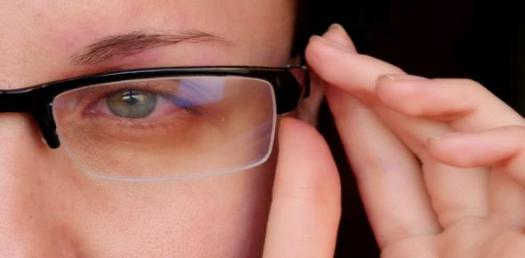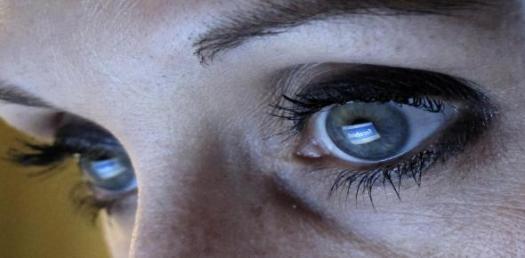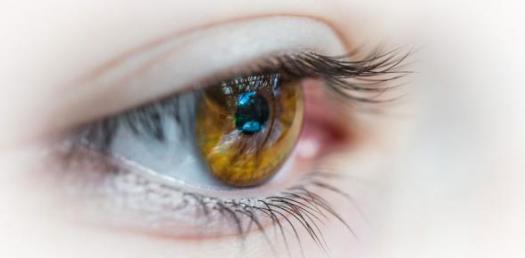Hypermetropia Quiz: Know More About This Defect!

Hypermetropia is a abnormal condition in which vision for distant objects is better than for near objects. So many people suffer from Hypermetropia without even knowing it. Hypermetropia get noticed when the eyes can not compensate any longer.
What do you know about Hypermetropia's Defect! Try this Trivia Quiz to find out
- 1.
Which of these defines Hypermetropia?
- A.
Inability of not seeing a far away object clearly
- B.
Feelling your eyes are often tired and you have problems focusing on objects close to your eyes
- C.
Completely blind
- D.
All of the above
Correct Answer
B. Feelling your eyes are often tired and you have problems focusing on objects close to your eyesExplanation
Hypermetropia is a condition where a person has difficulty focusing on objects that are close to their eyes. This is often accompanied by symptoms such as eye fatigue and strain. Therefore, the correct answer is "Feeling your eyes are often tired and you have problems focusing on objects close to your eyes."Rate this question:
-
- 2.
What type of lens corrects hyperopia?
- A.
Convex Lenses
- B.
Acuvue Oasys
- C.
CooperVision Proclear
- D.
None of the above
Correct Answer
A. Convex LensesExplanation
Convex lenses are the correct answer for correcting hyperopia. Hyperopia, also known as farsightedness, is a condition where distant objects are seen more clearly than nearby objects. Convex lenses are thicker at the center and thinner at the edges, causing light rays to converge and focus properly on the retina, thus correcting the vision problem. Acuvue Oasys and CooperVision Proclear are specific brands of contact lenses and are not directly related to the correction of hyperopia. Therefore, the correct answer is convex lenses.Rate this question:
-
- 3.
Which of these is Hypermetropia's Prevention?
- A.
Drinking adequate fluids to prevent eye dryness
- B.
Protecting the eyes when working with hazardous or caustic substances
- C.
Eating a healthy diet that is rich in vitamins A and C
- D.
All of the above
Correct Answer
D. All of the aboveExplanation
Hypermetropia is a refractive error where distant objects are seen more clearly than near objects. It is caused by the eyeball being too short or the cornea being too flat, resulting in light focusing behind the retina instead of directly on it. Drinking adequate fluids can prevent eye dryness, which can worsen hypermetropia symptoms. Protecting the eyes when working with hazardous substances can prevent eye injuries that may contribute to the development or worsening of hypermetropia. Eating a healthy diet rich in vitamins A and C can support overall eye health and potentially reduce the risk of developing hypermetropia. Therefore, all of the above measures can help in the prevention of hypermetropia.Rate this question:
-
- 4.
Which of these is the cause of farsightedness?
- A.
Too much glasses
- B.
Sleeping with lenses
- C.
Flat cornea
- D.
None of the above
Correct Answer
C. Flat corneaExplanation
Farsightedness, also known as hyperopia, is a refractive error that occurs when the cornea is flat or the eyeball is too short. This causes light to focus behind the retina instead of directly on it, resulting in blurred vision for near objects. The correct answer, "Flat cornea," explains the cause of farsightedness by indicating that a flat cornea is responsible for the condition.Rate this question:
-
- 5.
What foods improve eyesight naturally?
- A.
Potatoes and butter
- B.
Rice
- C.
Pizza
- D.
All of the above
Correct Answer
A. Potatoes and butterExplanation
Potatoes and butter can improve eyesight naturally because potatoes are rich in vitamin C, which helps in preventing cataracts and reducing the risk of macular degeneration. Butter contains vitamin A, which is essential for good vision and helps in maintaining the health of the cornea. Therefore, consuming potatoes and butter can provide the necessary nutrients to support healthy eyesight.Rate this question:
-
- 6.
What is the main cause of Hypermetropia?
- A.
Eating disorder
- B.
Too much glasses
- C.
Insufficient eye length
- D.
None of the above
Correct Answer
C. Insufficient eye lengthExplanation
The main cause of hypermetropia is insufficient eye length. Hypermetropia, also known as farsightedness, occurs when the eyeball is too short or the cornea is too flat, causing light to focus behind the retina instead of directly on it. This results in difficulty seeing objects up close. Eating disorder and wearing too many glasses are not related to hypermetropia.Rate this question:
-
- 7.
How is Hypermetropia corrected?
- A.
Converging
- B.
Positive lenses
- C.
All of the above
- D.
None of the above
Correct Answer
C. All of the aboveExplanation
Hypermetropia is a condition where a person has difficulty seeing nearby objects clearly. It occurs when the eyeball is shorter than normal or the cornea is too flat, causing light to focus behind the retina instead of directly on it. To correct hypermetropia, converging lenses are used. These lenses are thicker in the middle and help to converge the incoming light rays, allowing them to focus properly on the retina. Positive lenses, which are thicker at the center, are commonly used to correct hypermetropia. Therefore, both converging lenses and positive lenses are used to correct hypermetropia, making the answer "All of the above" correct.Rate this question:
-
- 8.
Which of these is the symptoms of Hypermetropia?
- A.
Tiring of the eyes
- B.
Headaches
- C.
Uncomfortable Vision
- D.
All of the above
Correct Answer
D. All of the aboveExplanation
Hypermetropia, also known as farsightedness, is a condition where distant objects can be seen clearly, but close objects appear blurry. This occurs when the eyeball is shorter than normal or when the cornea is too flat. The symptoms of hypermetropia include tiring of the eyes, headaches, and uncomfortable vision. These symptoms occur because the eyes have to work harder to focus on close objects, leading to eye strain and discomfort. Therefore, the correct answer is "All of the above".Rate this question:
-
- 9.
Which of these is not Hypermetropia's Treatment?
- A.
Glasses
- B.
Surgery
- C.
Vitamins
- D.
Contact lenses
Correct Answer
C. VitaminsExplanation
Vitamins are not a treatment for hypermetropia. Hypermetropia, also known as farsightedness, is a refractive error where distant objects are seen more clearly than nearby objects. The correct treatments for hypermetropia include wearing glasses or contact lenses to correct the refractive error, and in some cases, surgery may be an option to reshape the cornea and improve vision. However, taking vitamins alone does not address the underlying issue of the refractive error and cannot correct hypermetropia.Rate this question:
-
- 10.
What is the other name of Hypermetropia?
- A.
Hypertension
- B.
Hyperopia
- C.
Eye problem
- D.
None of the above
Correct Answer
B. HyperopiaExplanation
Hyperopia, also known as farsightedness, is a common eye condition where distant objects can be seen clearly, but close objects appear blurry. It occurs when the eyeball is shorter than normal or when the cornea is too flat, causing light entering the eye to focus behind the retina instead of directly on it. This results in difficulty focusing on nearby objects. Therefore, Hyperopia is the correct answer as it is another name for the condition.Rate this question:
-
Quiz Review Timeline +
Our quizzes are rigorously reviewed, monitored and continuously updated by our expert board to maintain accuracy, relevance, and timeliness.
-
Current Version
-
Mar 21, 2023Quiz Edited by
ProProfs Editorial Team -
Dec 01, 2019Quiz Created by
Gregorynaomi












